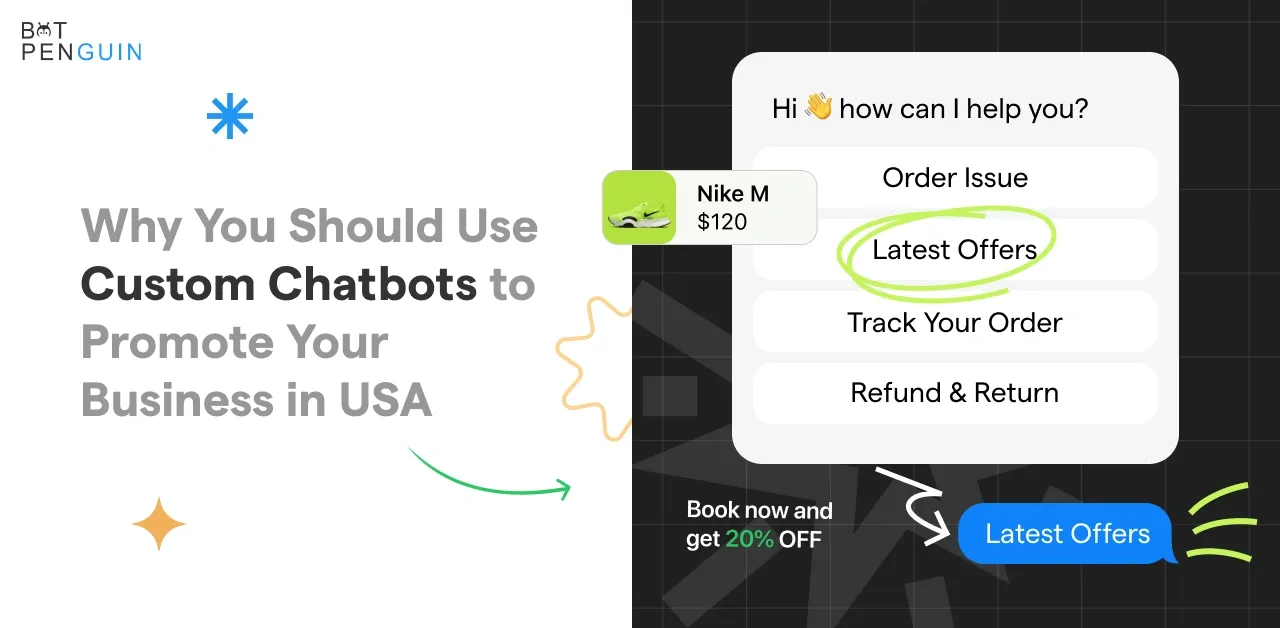In today's data-driven era, artificial intelligence plays a pivotal role in transforming industries and revolutionizing the way we interact with technology. However, AI models often require explicit instructions or prompts to generate the desired outputs. This is where prompt engineering steps in.
Did you know that well-crafted prompts can significantly impact the performance and reliability of AI models? High quality and good design of prompts can lead to substantial improvements in AI-generated outputs.
In fact, experiments conducted by researchers have demonstrated up to a 50% increase in accuracy when using carefully tailored prompts.
Whether you're training chatbots, language translation models, or recommendation systems, prompt engineering is the secret sauce that enhances their capabilities. It enables AI systems to comprehend user queries better, generate more coherent responses, and tailor suggestions based on specific contexts.
So, if you're looking to harness the true power of AI and elevate the performance of your AI applications, prompt engineering is an indispensable tool in your arsenal.
This blog will delve into more detail about this, let’s dive in.
What is Prompt Engineering?
AI language models rely on prompts as the input to generate responses. Prompt Engineering involves crafting these prompts strategically to elicit desired outputs.
It's like providing instructions to a language model to guide its response generation.
Prompts serve as the starting point for AI language models. They provide context and cues for the model to understand the desired task or objective.
The quality and specificity of prompts heavily influence the generated output.
Through Prompt Engineering, we can influence the behavior of AI models by manipulating the input prompts. We can control style, tone, domain specificity, and bias.
It allows us to fine-tune the model's responses and tailor them to specific requirements.
What is the Need for Prompt Engineering?
There are many reasons why there is a need for Prompt engineering.
The Limitations of AI-Language Models without Prompt Engineering
AI language models, although powerful, have inherent limitations when it comes to generating accurate and relevant responses without prompt engineering.
These models work by analyzing patterns in large amounts of training data but need help to grasp nuanced intentions and context.
With clear instructions provided through prompts, they may be able to understand the specific task or objective at hand.
This can result in unsatisfactory output, such as answers that are factually incorrect, irrelevant, or lack the necessary depth and specificity.
Prompt engineering fills this gap by providing explicit cues and instructions that guide the model's response generation process, ensuring that the output aligns with the desired goals.
Examples of Potential Issues and Biases in AI-Generated Content
The content generated by AI models is not immune to biases and potential issues. If prompts are inadequately designed or unintentionally biased, AI models trained on such prompts may generate content that perpetuates stereotypes, exhibits discriminatory behavior, or produces unethical outputs.
For example, if the prompt implicitly contains gender or racial bias, the AI model may reflect those biases in its responses. Prompt engineering is crucial in mitigating these risks by ensuring that prompts are carefully crafted to be fair, unbiased, and inclusive.
By providing clear and neutral instructions, prompt engineering helps to reduce potential biases. It promotes the generation of ethical, respectful content and is aligned with the desired values and principles.
The Impact of Prompt Design on Model Output
The design of prompts significantly impacts the output of AI language models. Well-crafted prompts can greatly enhance the generated content's accuracy, relevance, and user satisfaction.
By refining prompts, we can guide the AI model to produce responses tailored to specific requirements. For instance, by providing prompts that specify the desired writing style, tone, or level of formality, we can shape the generated content to align with our objectives.
Additionally, prompts can be customized to suit different domains or applications, allowing the AI model to generate task-specific content.
By investing time and effort in prompt engineering, we can optimize the behavior and output of AI models, ultimately providing users with more accurate, contextually appropriate, and reliable responses.
Types of Prompts in Prompt Engineering
There are different types of Prompts available such as
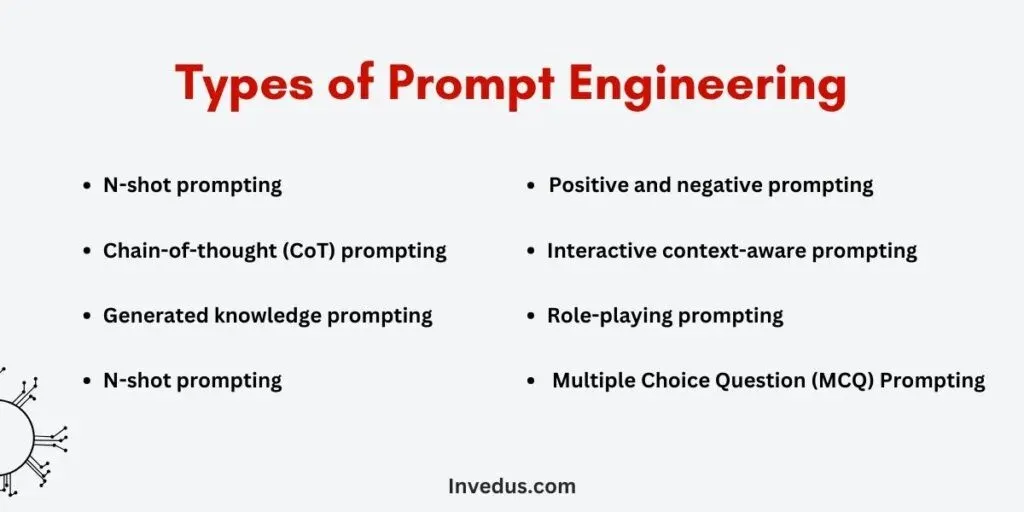
Single-Sentence Prompts
Simple yet powerful, single-sentence prompts provide concise instructions or queries to the AI model. They are commonly used for tasks that require short, direct responses.
Multiple-Sentence Prompts
Complex tasks often require multi-step instructions or context. Multiple-sentence prompts offer a more elaborate structure, allowing AI models to comprehend and respond accordingly.
Contextual Prompts
Context is crucial for understanding user intent and generating relevant responses. Contextual prompts provide additional information or preceding dialogue to help AI models grasp the context accurately while doing Prompt Engineering
Task-Specific Prompts
Tailoring prompts to specific tasks or domains enhances the AI model's proficiency in generating task-specific content. Task-specific prompts can fine-tune responses for applications like programming, customer service, or content generation.
By harnessing the power of these prompt types, we can achieve great control over the output of AI language models.
Applications of Prompt Engineering
There are various Applications of Prompts available such as
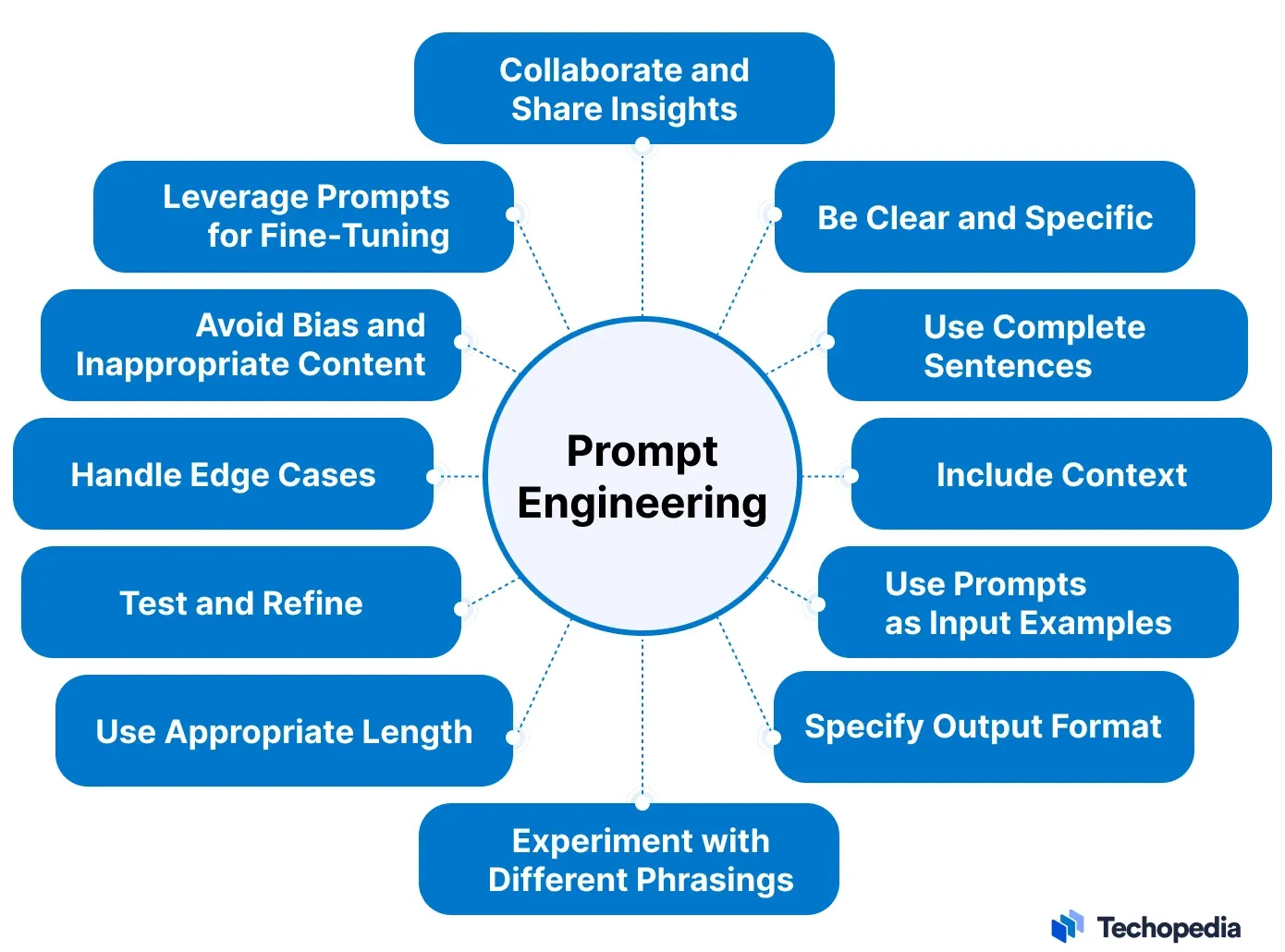
Content Generation in Various Domains
Prompt engineering unlocks the potential for generating high-quality content in diverse domains.
Whether you need assistance writing articles, programming code snippets, or crafting customer service responses, prompt engineering empowers you to harness the AI model's capabilities and enhance productivity.
Data Analysis and Insights
Prompt engineering can also be applied to analyze and extract insights from complex datasets.
By formulating targeted prompts, you can prompt the model to interpret and summarize data, identify patterns, or make predictions. This enables you to leverage AI to derive valuable insights and inform decision-making processes.
Virtual Assistants and Chatbots
Virtual assistants and chatbots have become integral parts of our lives.
Prompt engineering plays a vital role in shaping their conversational abilities. By designing prompts that elicit natural and contextually appropriate responses, you can enhance the user experience, provide accurate information, and improve the overall efficiency of virtual assistants and chatbots.
Language Translation and Understanding
Prompt engineering can greatly assist in language translation and understanding tasks.
You can leverage AI large language models to facilitate multilingual communication, improve language comprehension, and overcome language barriers by crafting prompts that specify the source language, desired translation output, or linguistic nuances.
When to Use Prompt Engineering?
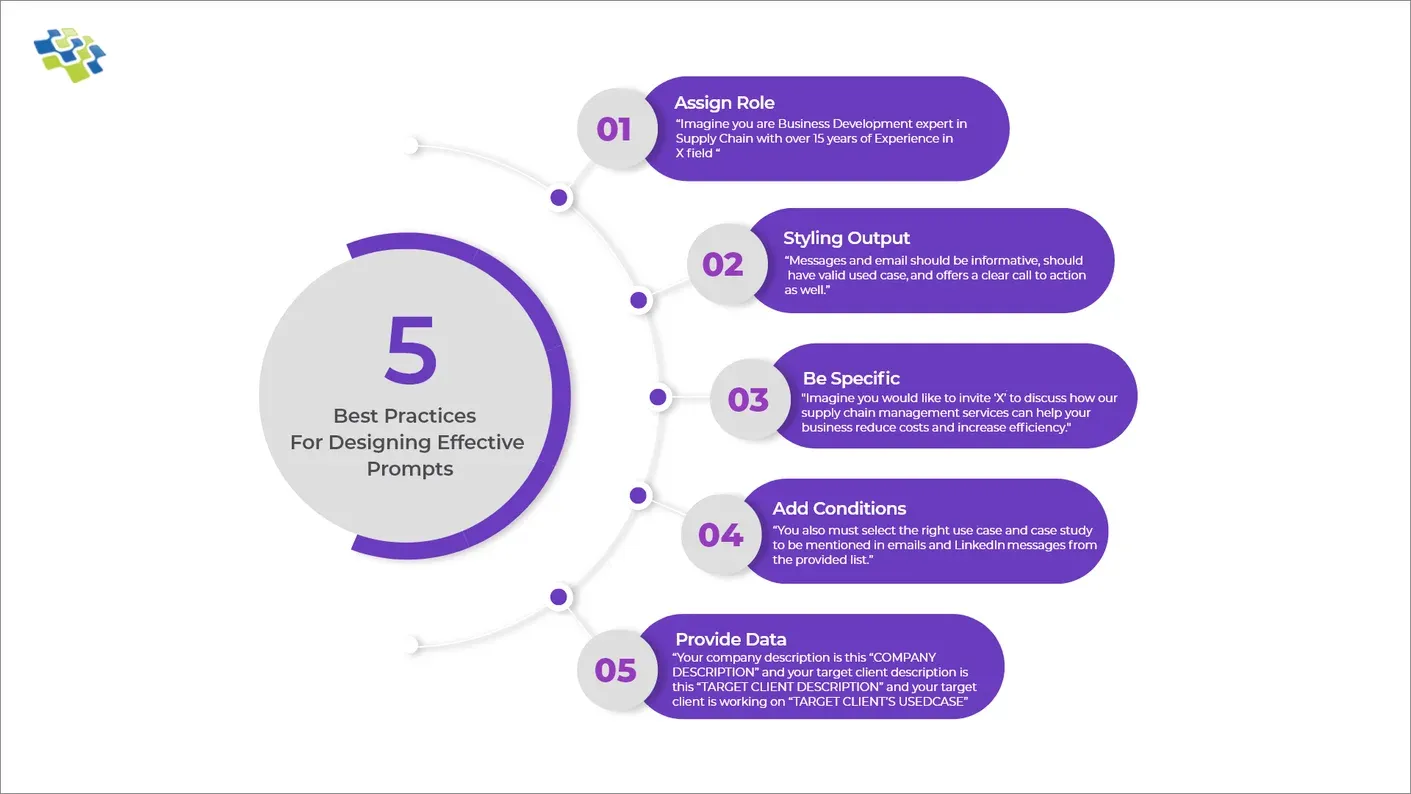
Scenarios Where Prompt Engineering is Beneficial
Prompt engineering is beneficial in various scenarios.
When faced with complex or time-consuming tasks, you can employ prompt engineering to streamline the process, generate high-quality outputs, or gain insights from large datasets.
Additionally, prompt engineering can be an invaluable tool if you require tailored responses or domain-specific knowledge.
Identifying Opportunities for Prompt Optimization
By analyzing your workflow and identifying pain points, you can pinpoint opportunities for prompt engineering to implement effectively.
Consider tasks that involve language generation, data analysis, or conversational interfaces. Look for areas where prompt engineering can enhance productivity, improve accuracy, or drive innovation.
Challenges and Considerations for Prompt Usage
While prompt engineering offers remarkable benefits, knowing specific challenges and considerations is important.
These include potential biases in the model's responses, the need for continuous monitoring and refinement, and ensuring compliance with ethical guidelines.
By addressing these challenges, you can maximize the effectiveness and responsible use of prompt engineering.
Suggested Reading:
Tools and Resources for Prompt Engineering
There are many tools available to assist with Prompt Engineering
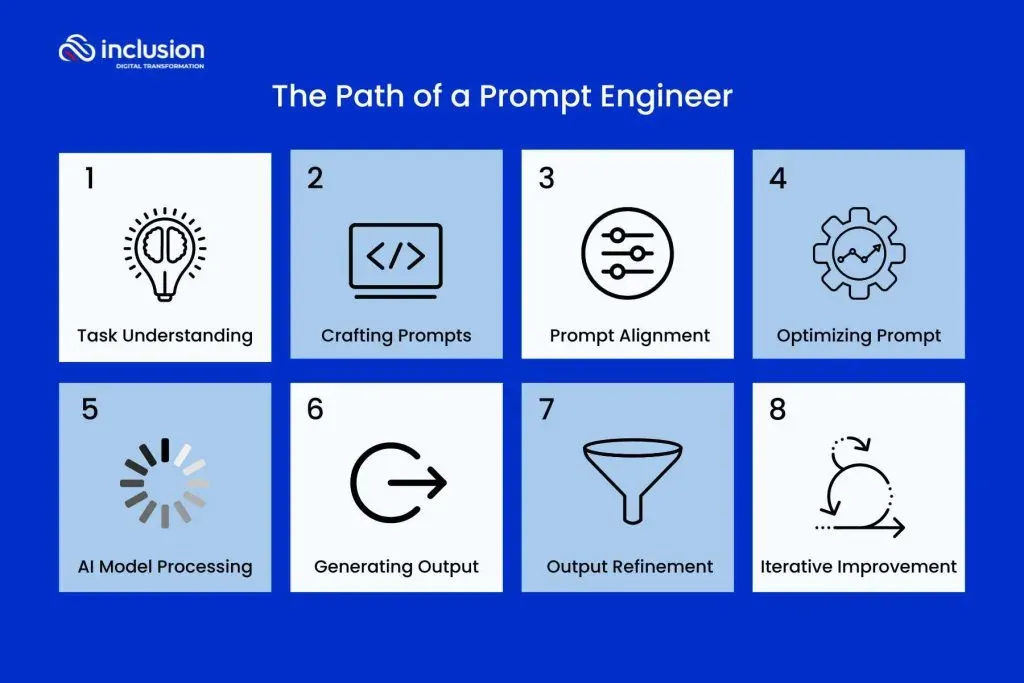
Popular Frameworks and Libraries for Prompt Engineering
Several popular frameworks and libraries are available to assist with prompt engineering.
These tools provide a range of functionalities, such as fine-tuning models, generating prompts, and evaluating model outputs. Some notable frameworks include OpenAI's GPT, Hugging Face's Transformers, and TensorFlow.
These resources empower you to experiment with prompt engineering techniques and optimize AI language models effectively.
Online Prompt Optimization Tools
Online prompt optimization tools offer user-friendly interfaces for prompt engineering. These platforms provide intuitive features to design, fine-tune, and evaluate prompts.
They often include built-in prompts, templates, and options to customize prompts based on your requirements.
These tools simplify the prompt engineering process and make it accessible to a broader audience.
Prompt Engineering Communities and Forums
Prompt engineering communities and forums provide valuable resources and support for individuals interested in prompt engineering.
These online communities offer a space for knowledge sharing, discussions, and collaboration.
Engaging with these communities allows you to stay updated on the latest developments, learn from experts, and gain insights into best practices in prompt engineering.
And speaking of chatbots, get custom-made conversational AI solutions from BotPenguin by hiring ChatGPT Developers in 3 days.
Our developers pack 5+ Years of experience designing prompts, embeddings, plugins, training, chatbots, or any custom application for efficient NLP and language model use.
- Whitelabel ChatGPT
- Hire ChatGPT Developers
- Custom ChatGPT Plugins
- Hire Chatbot Developers
- Custom Chatbot Development
- ChatGPT Clone
- ChatGPT Consultant
Future Trends and Challenges in Prompt Engineering
With increase in use of Prompt Engineering there are challenges and updates one will face while using them such as
Advancements in Prompt Engineering Techniques
The field of prompt engineering is continuously evolving, and future advancements are expected to enhance its capabilities further.
From improved fine-tuning methods to more sophisticated transfer learning approaches, stay informed about the latest techniques that will shape the future of prompt engineering.
These advancements will enable even greater customization and control over AI language models.
Ethical Considerations and Responsible AI Practices
As prompt engineering becomes more prevalent, addressing ethical considerations and practicing responsible AI is crucial.
Ensuring fairness, transparency, and avoiding biases in prompts are essential for building trustworthy and inclusive AI systems.
Stay informed about ethical guidelines, regulations, and responsible AI practices to ensure prompt engineering aligns with ethical standards.
Potential Challenges and Risks in Prompt Optimization
Prompt optimization may pose challenges and risks that need to be carefully managed.
Understanding potential pitfalls, such as over-optimization or unintended consequences, can help mitigate these risks.
Stay informed about emerging research and best practices to navigate challenges and ensure prompt engineering remains reliable and effective.
Conclusion
Prompt engineering plays a pivotal role in shaping the behavior and output of AI language models. You can unlock the full potential of AI models by fine-tuning prompts, utilizing transfer learning, and customizing formats.
With the availability of frameworks, online tools, and supportive communities, prompt engineering is becoming more accessible and powerful. As you explore prompt engineering techniques, remember the importance of ethical considerations and responsible AI practices.
Embrace prompt engineering and contribute to the future of AI, where human creativity and AI capabilities merge to create remarkable experiences


